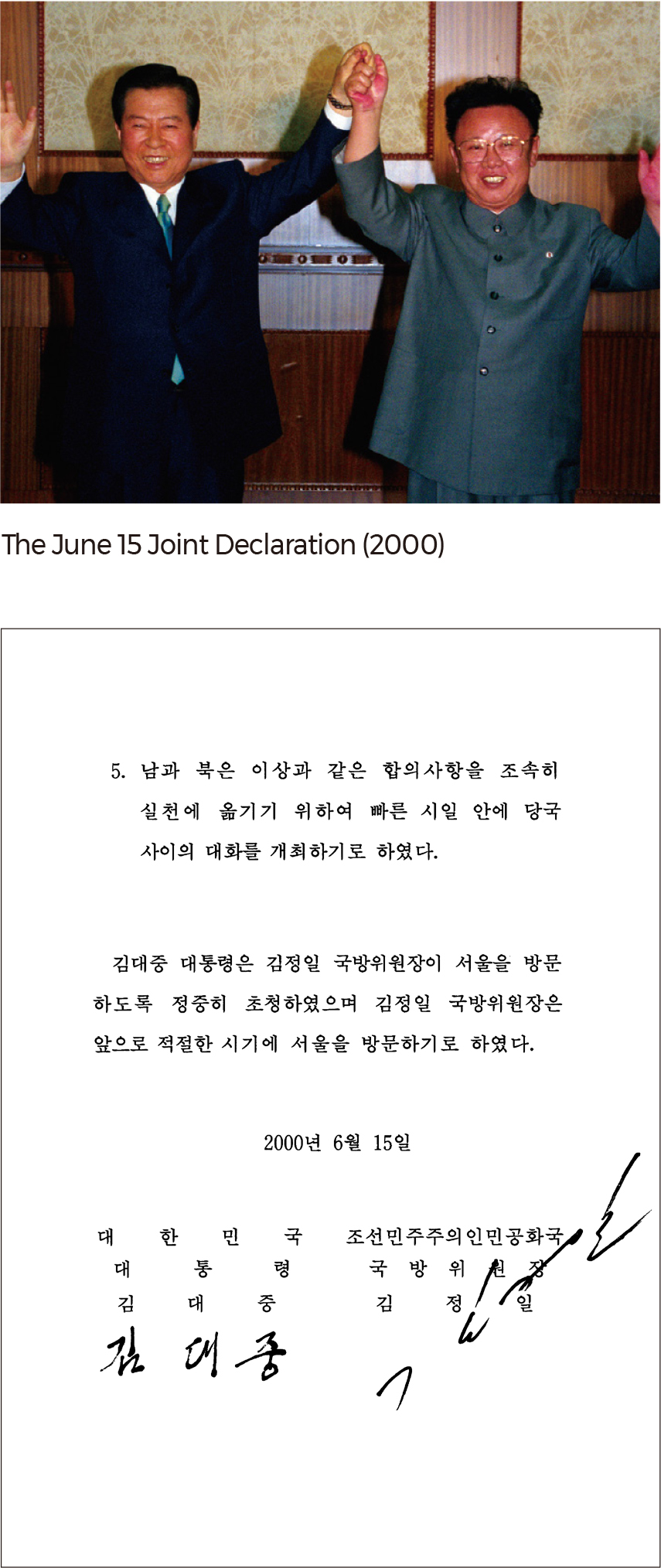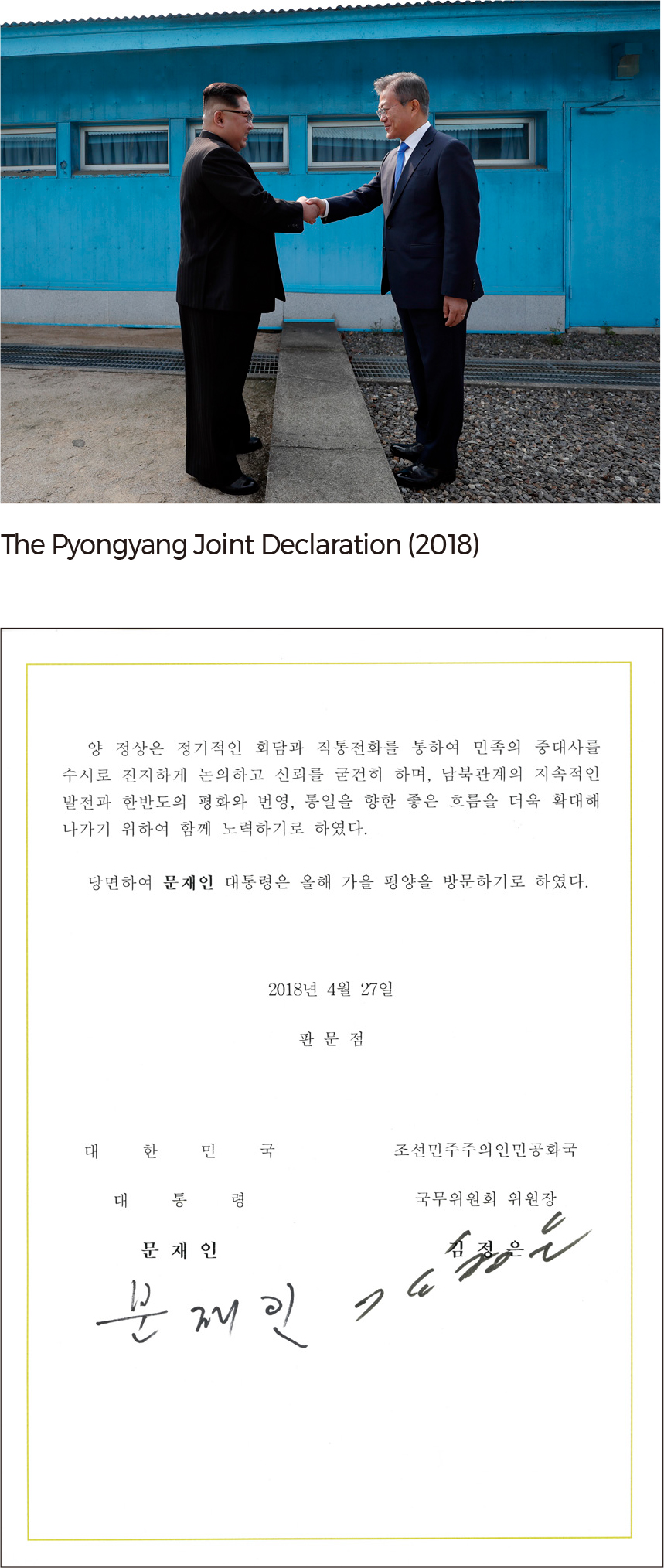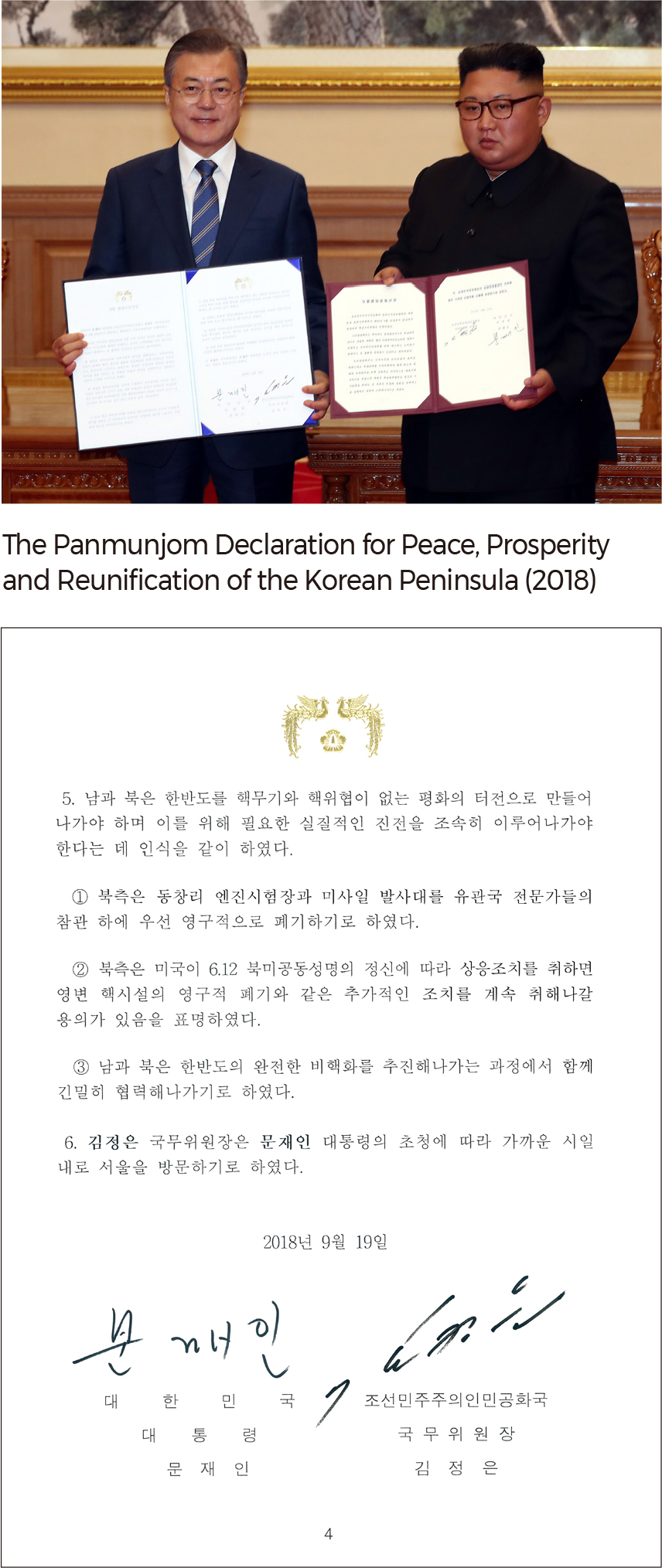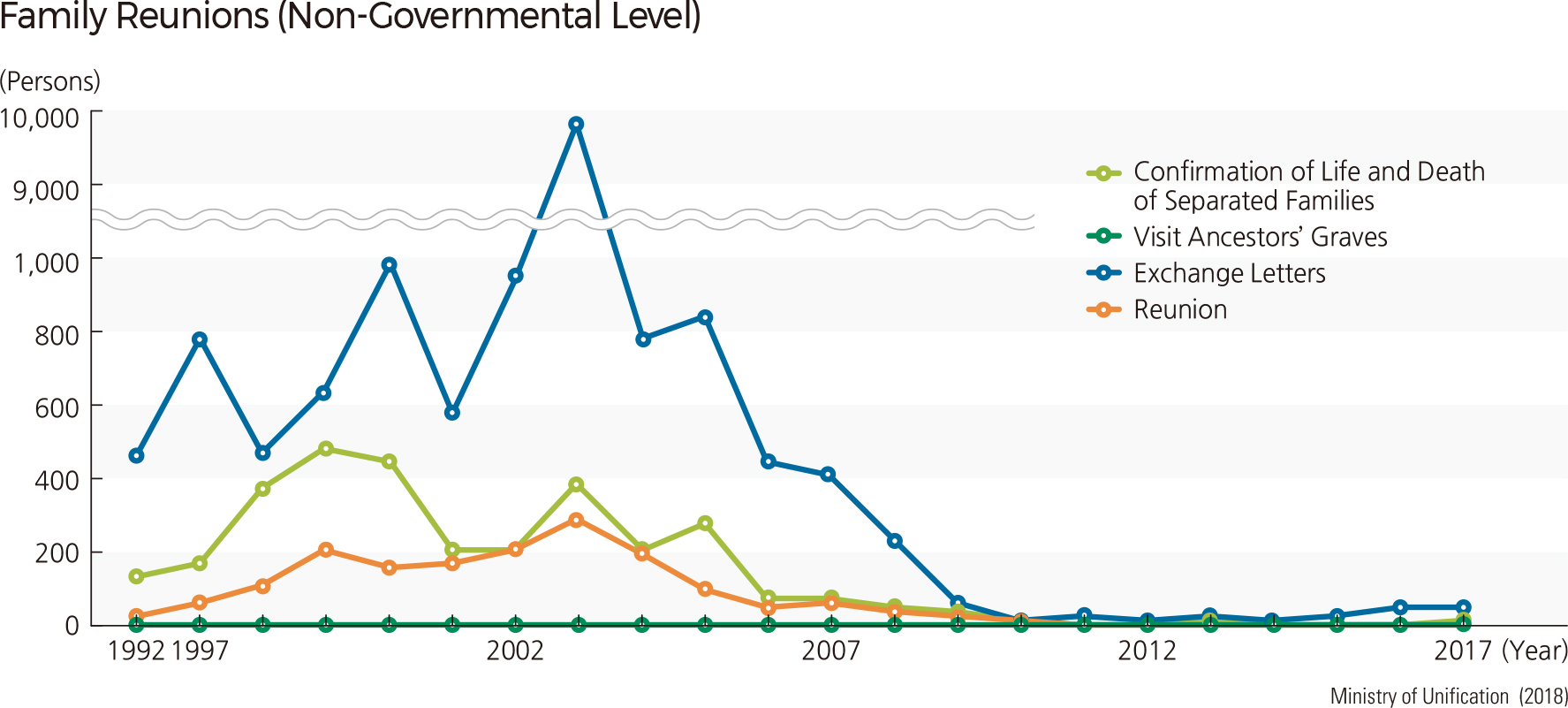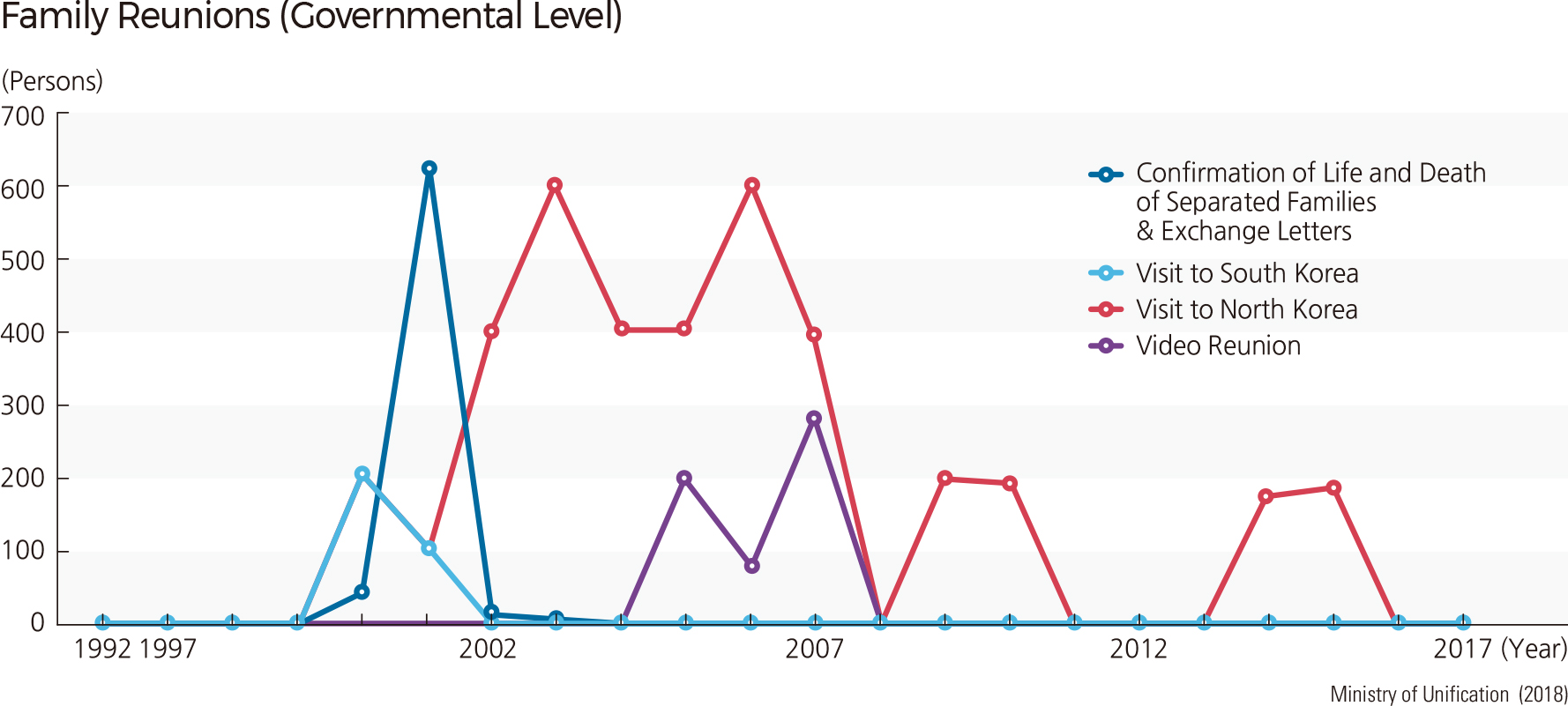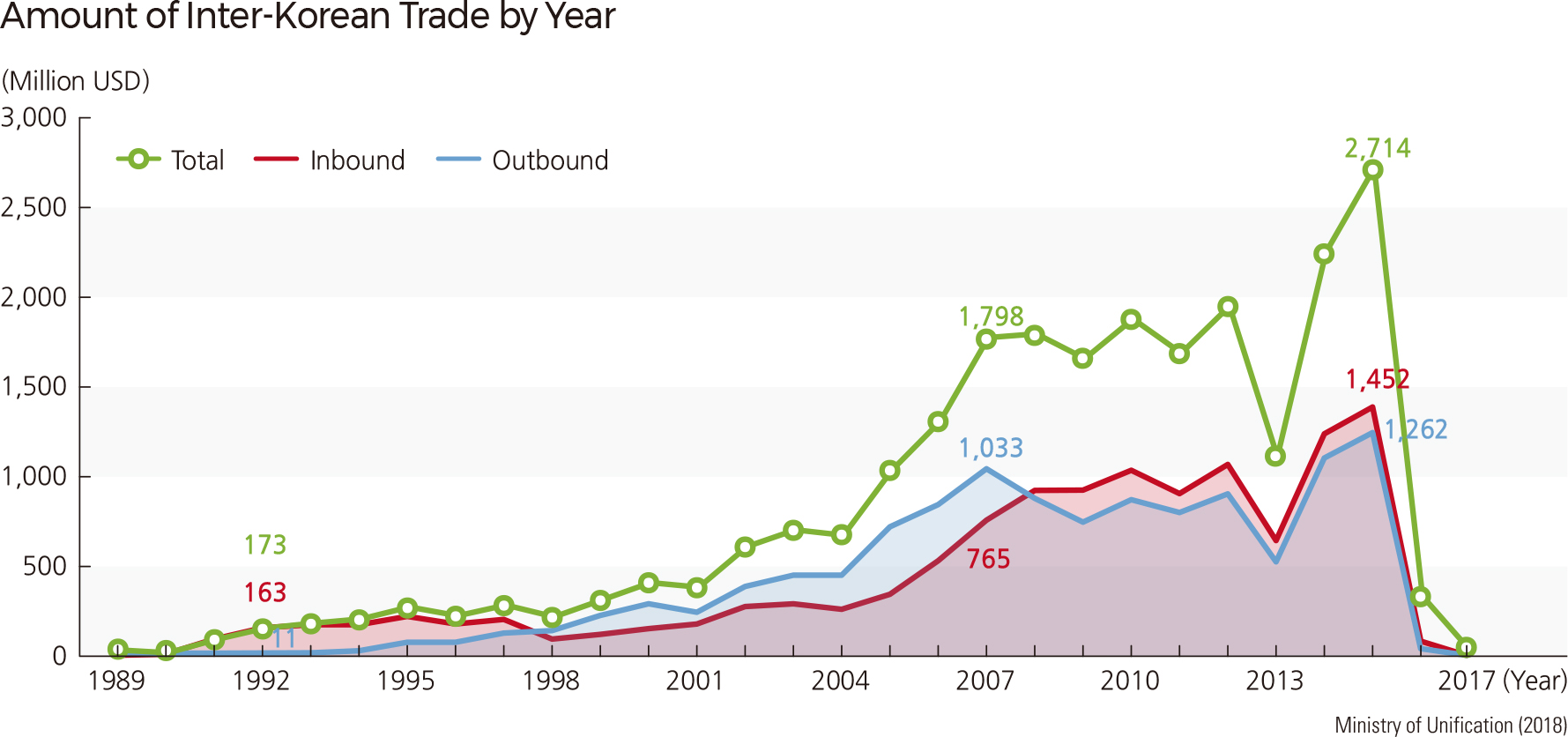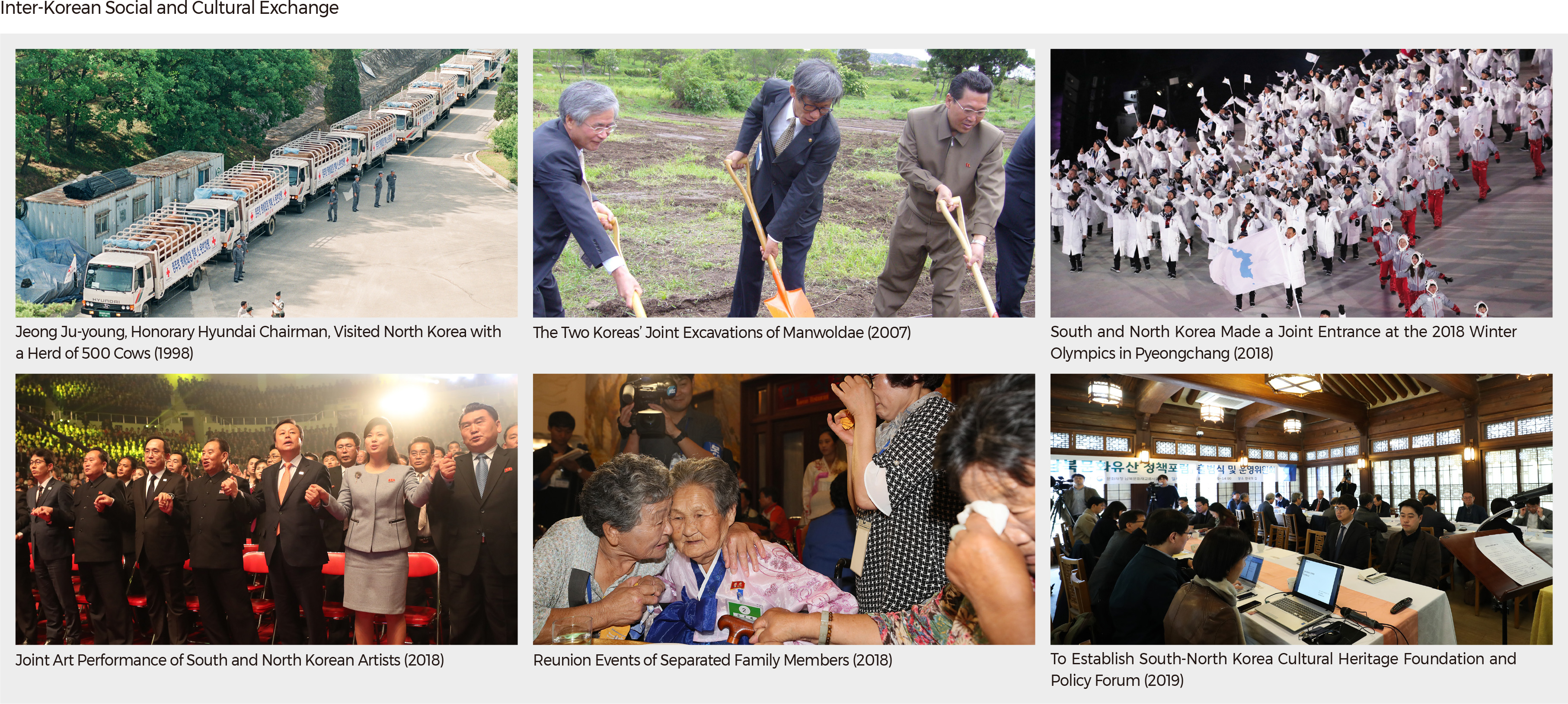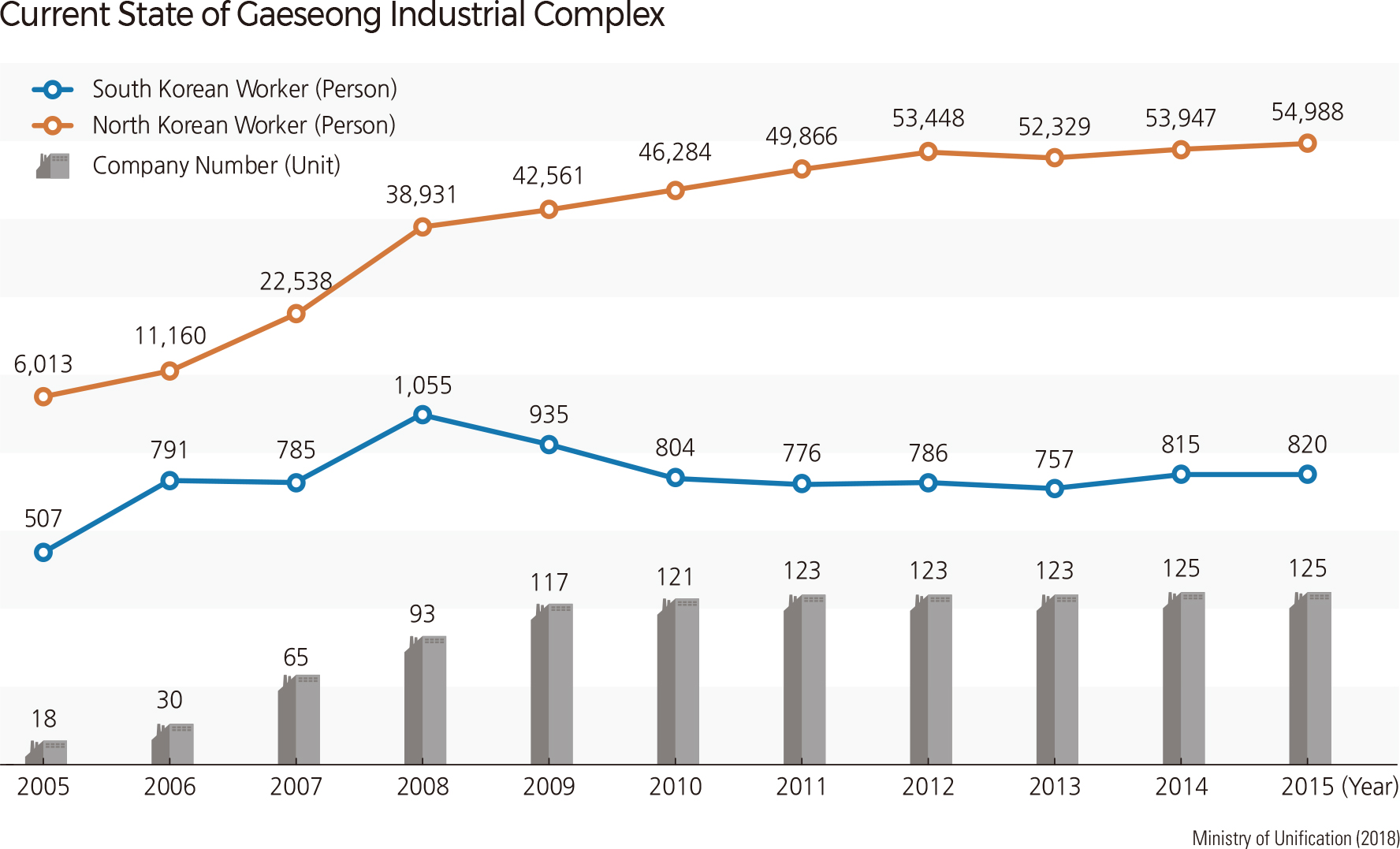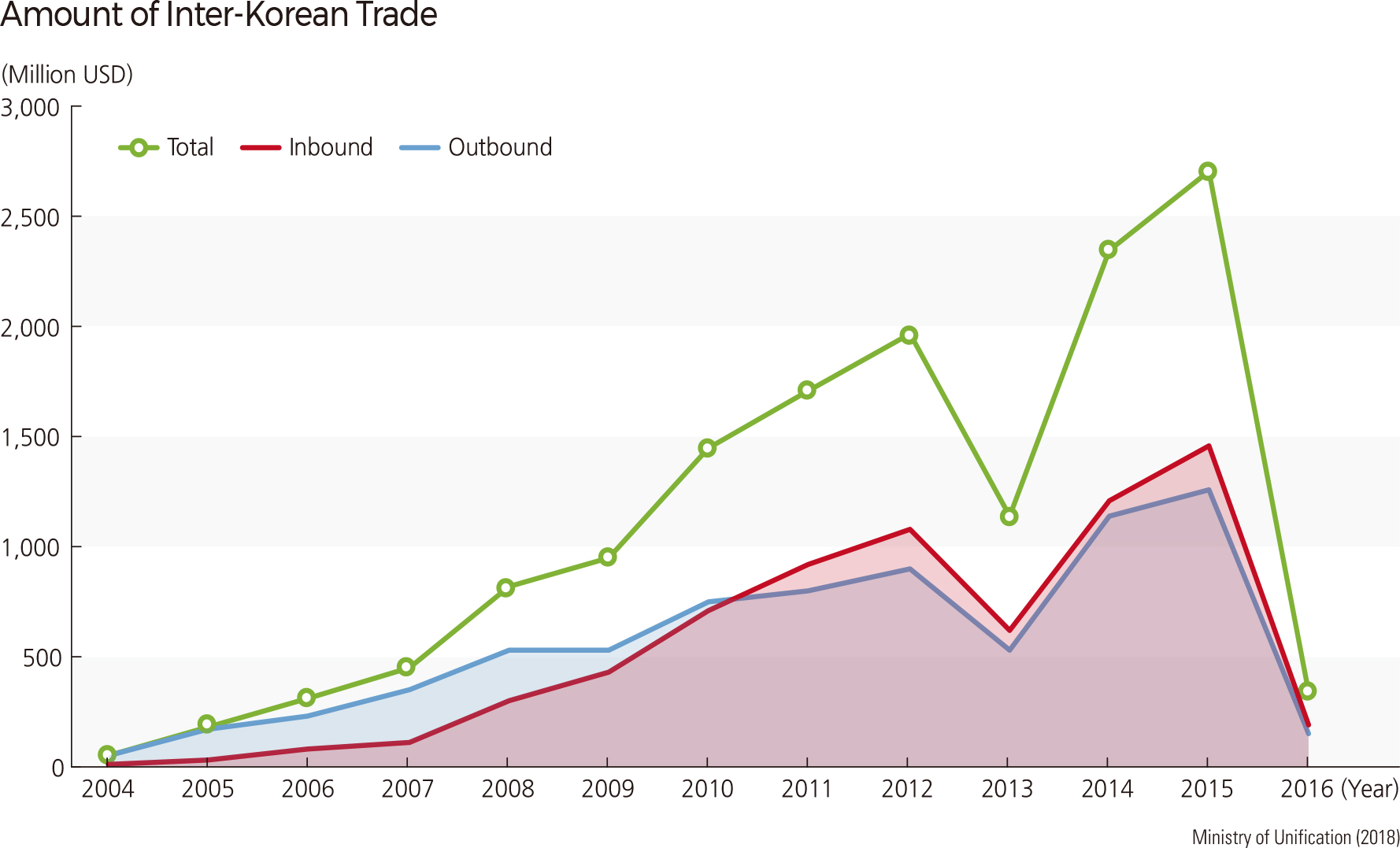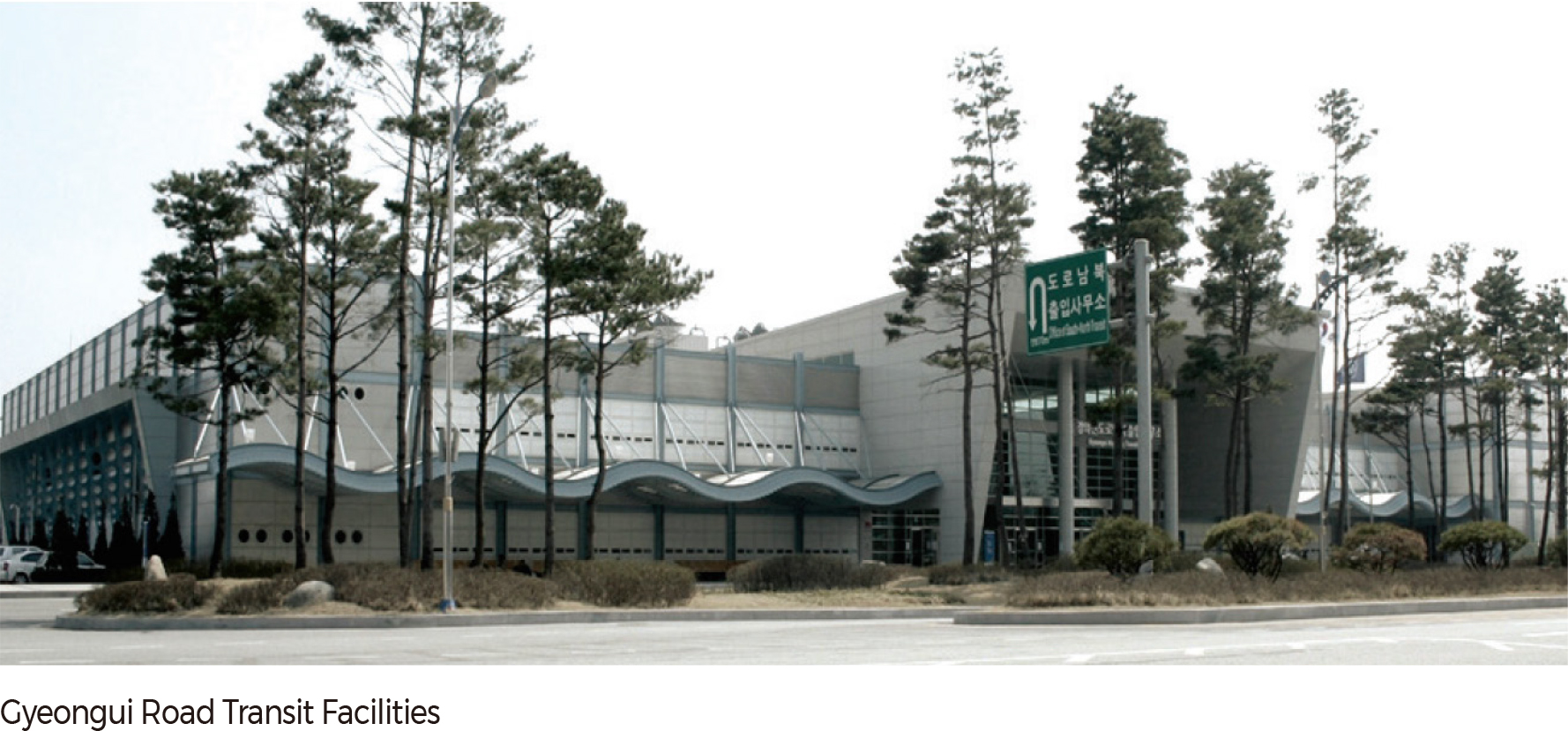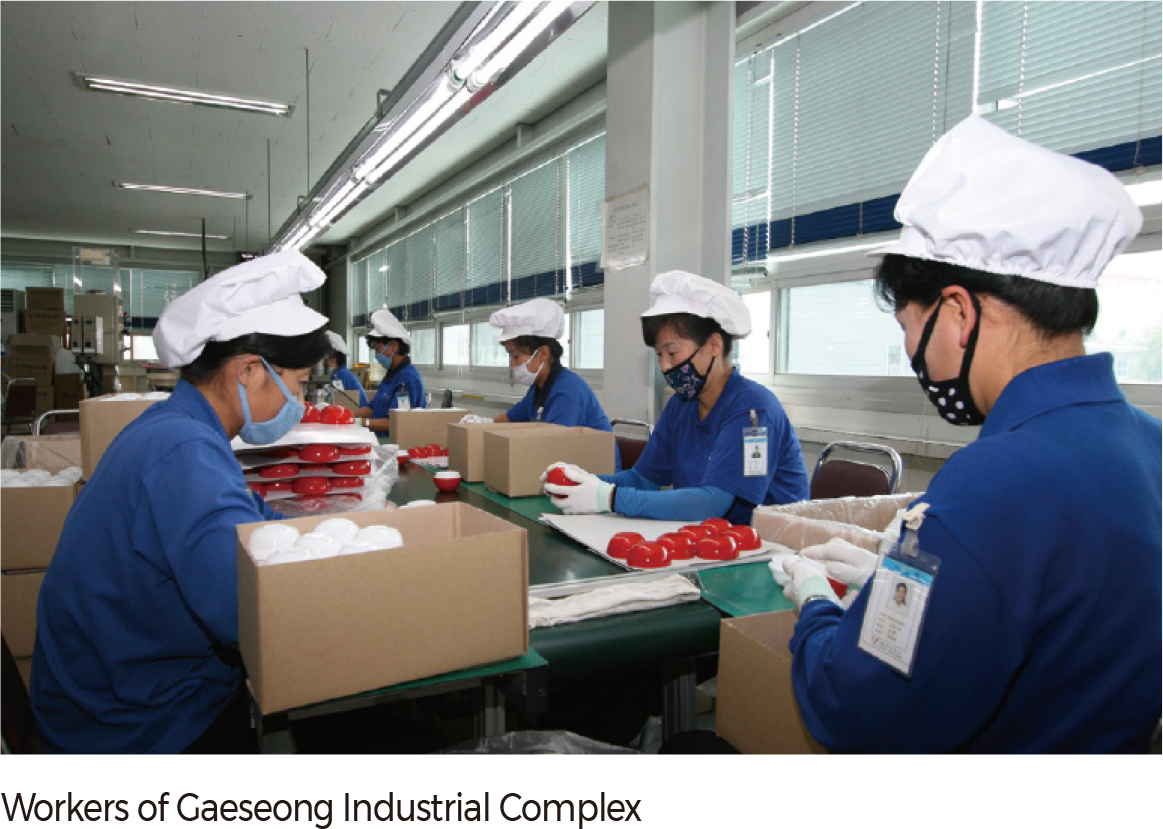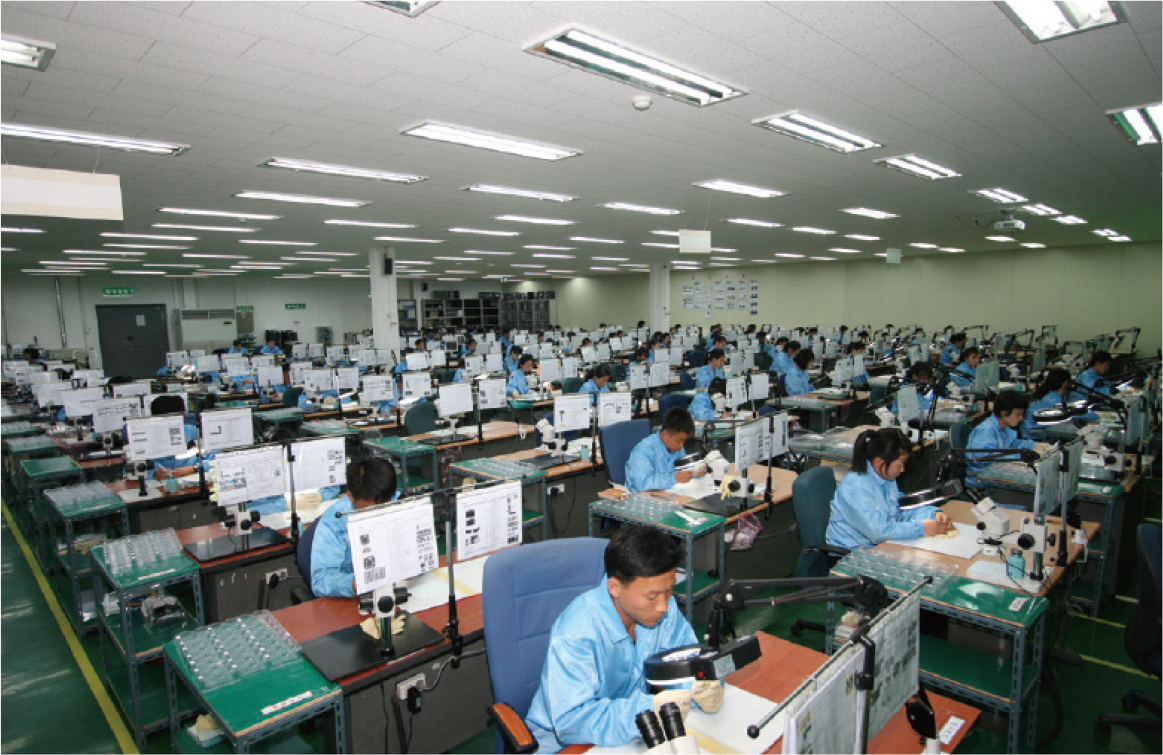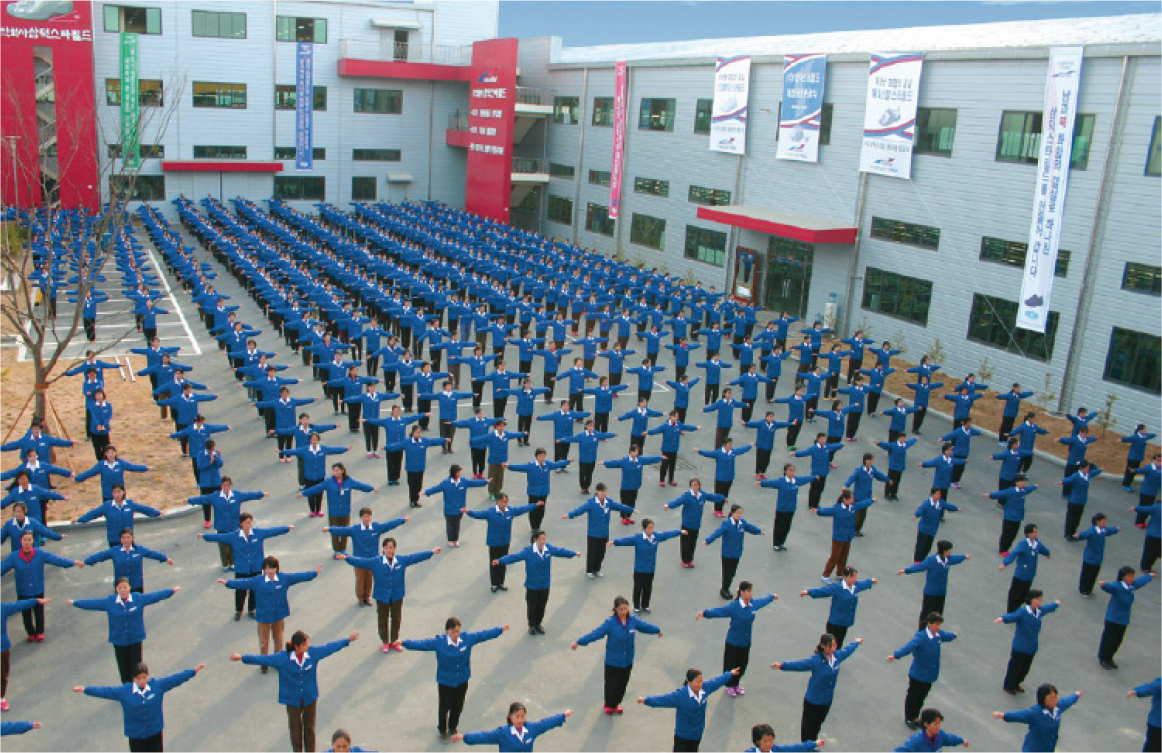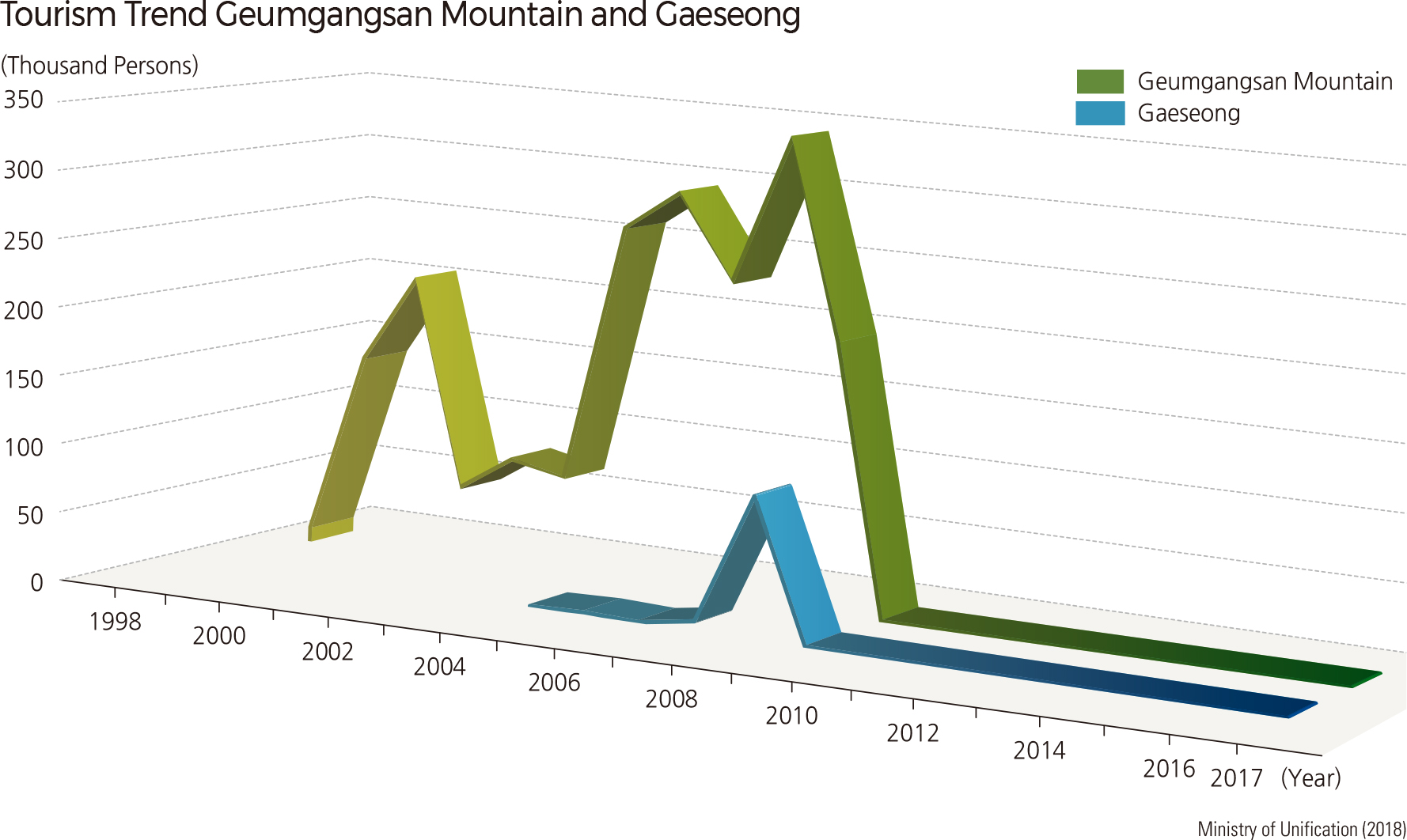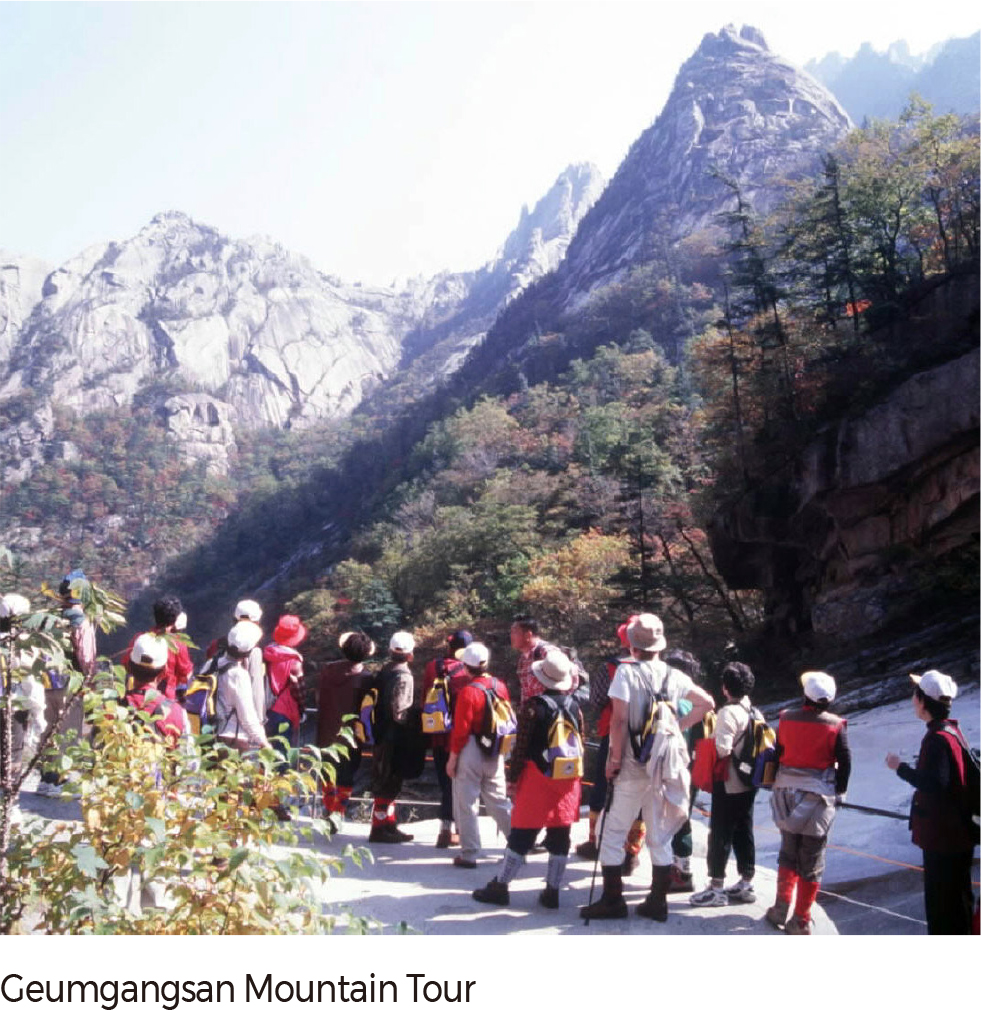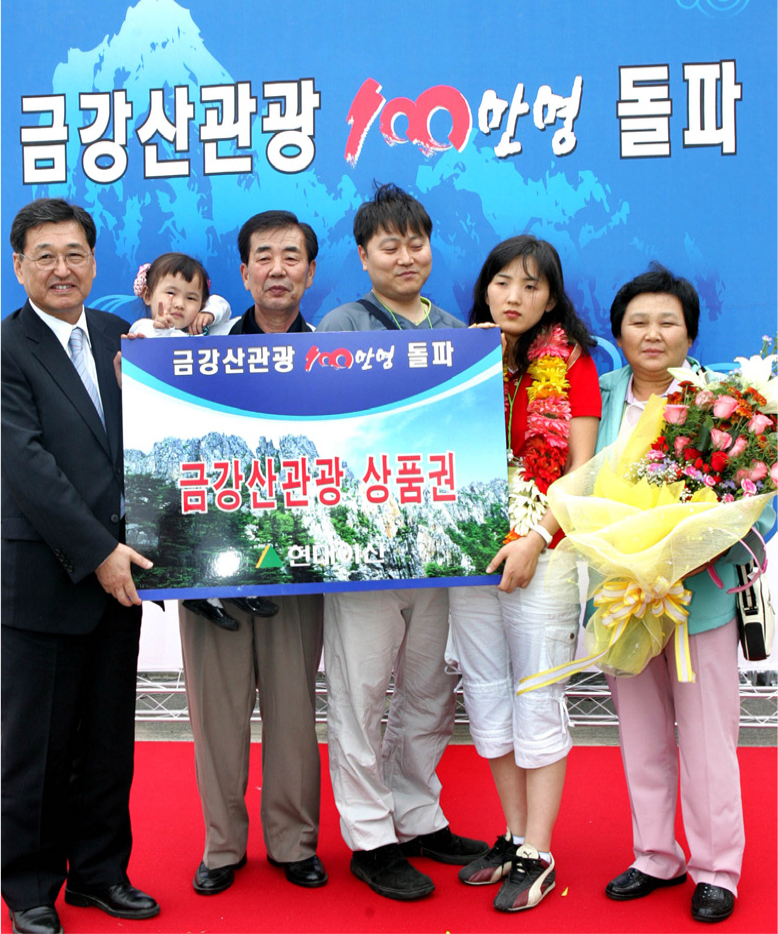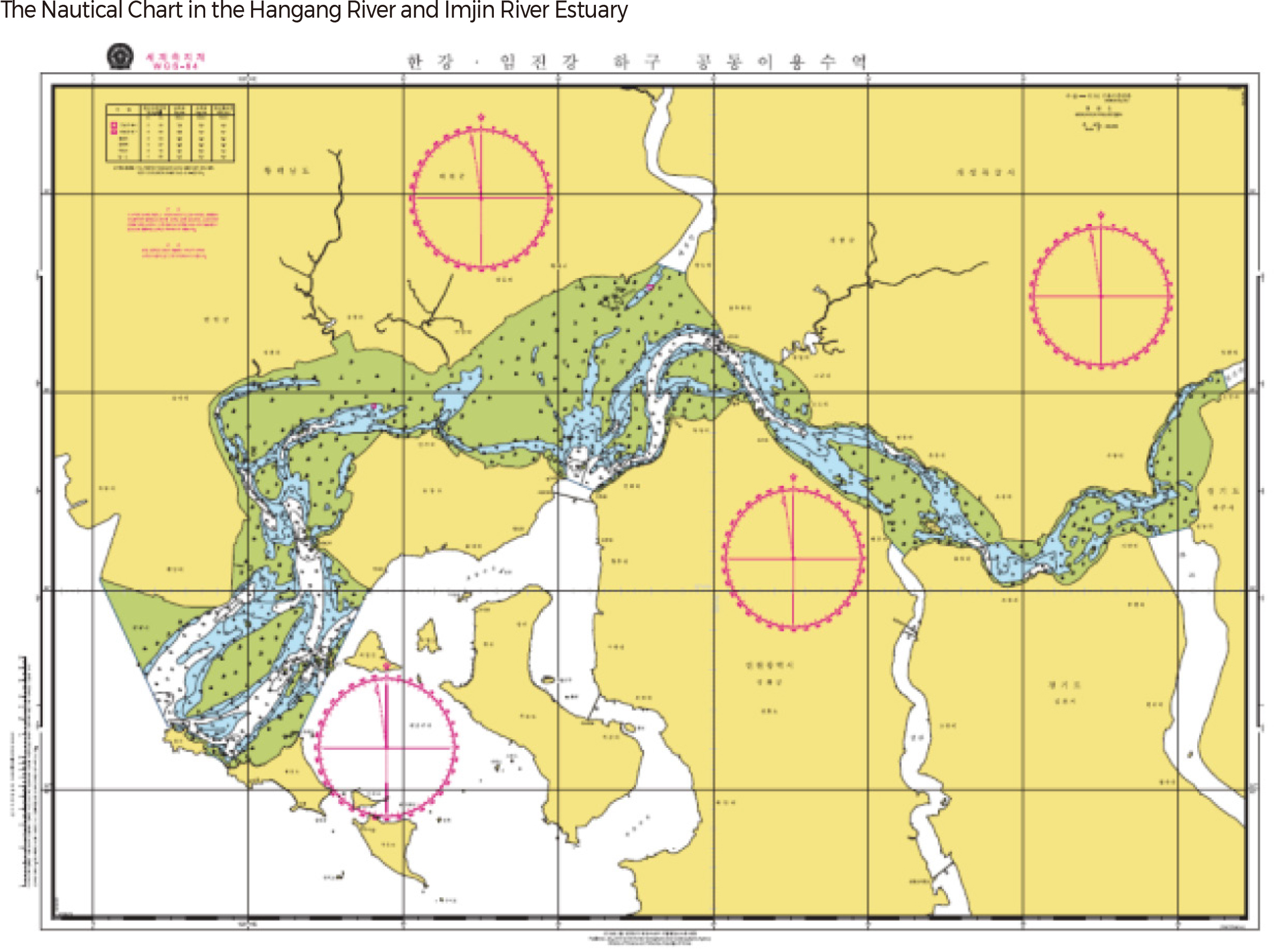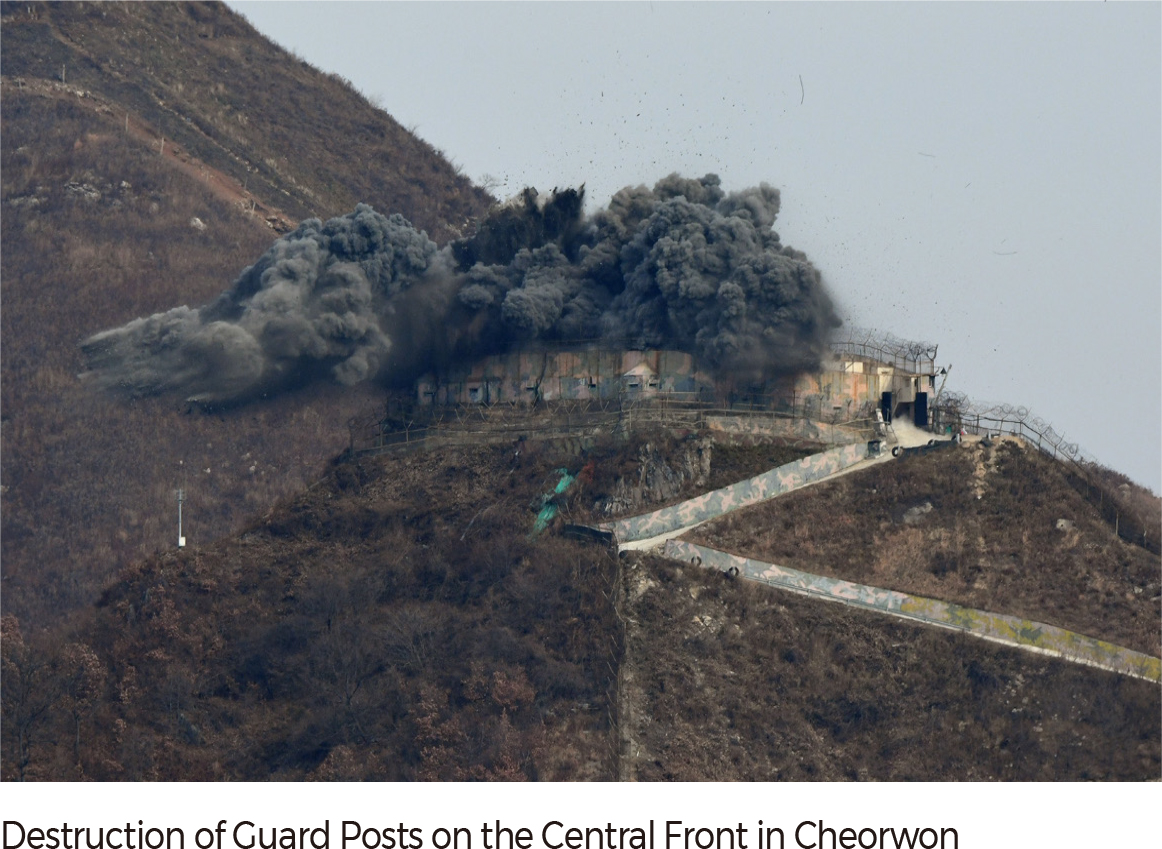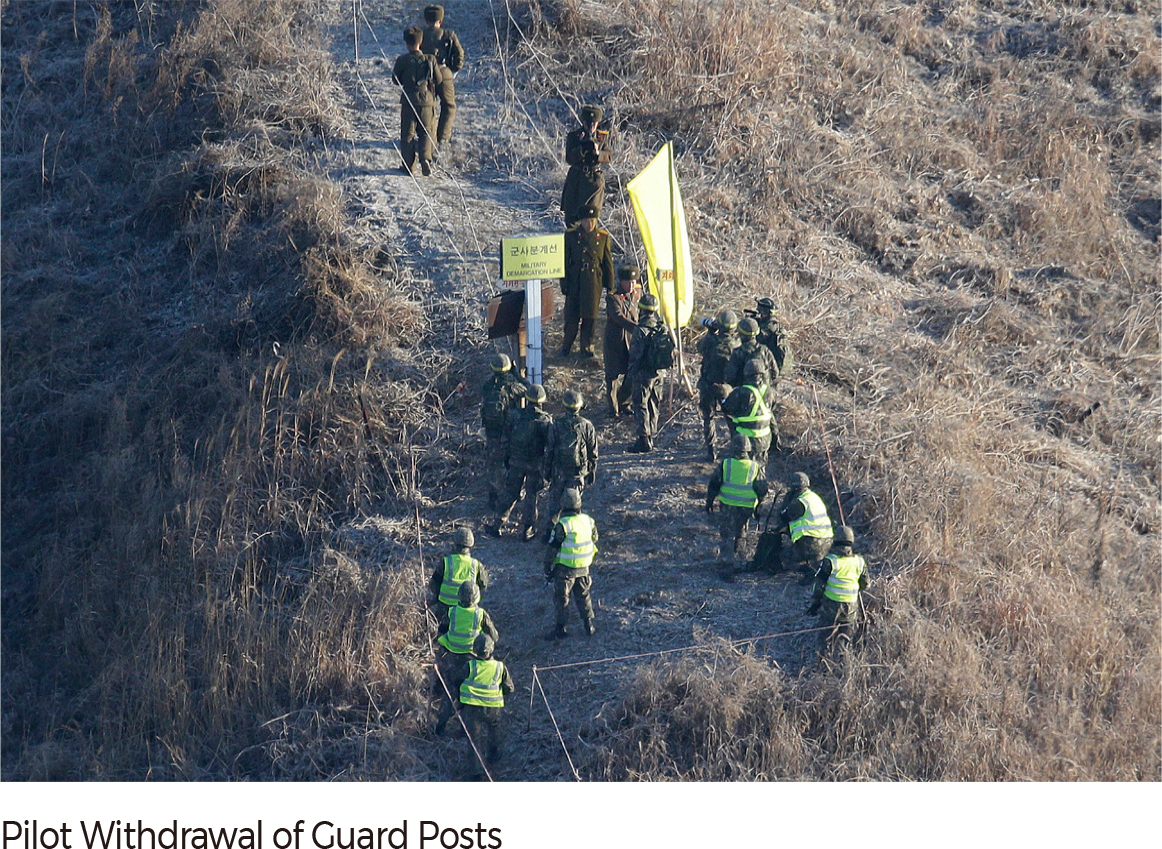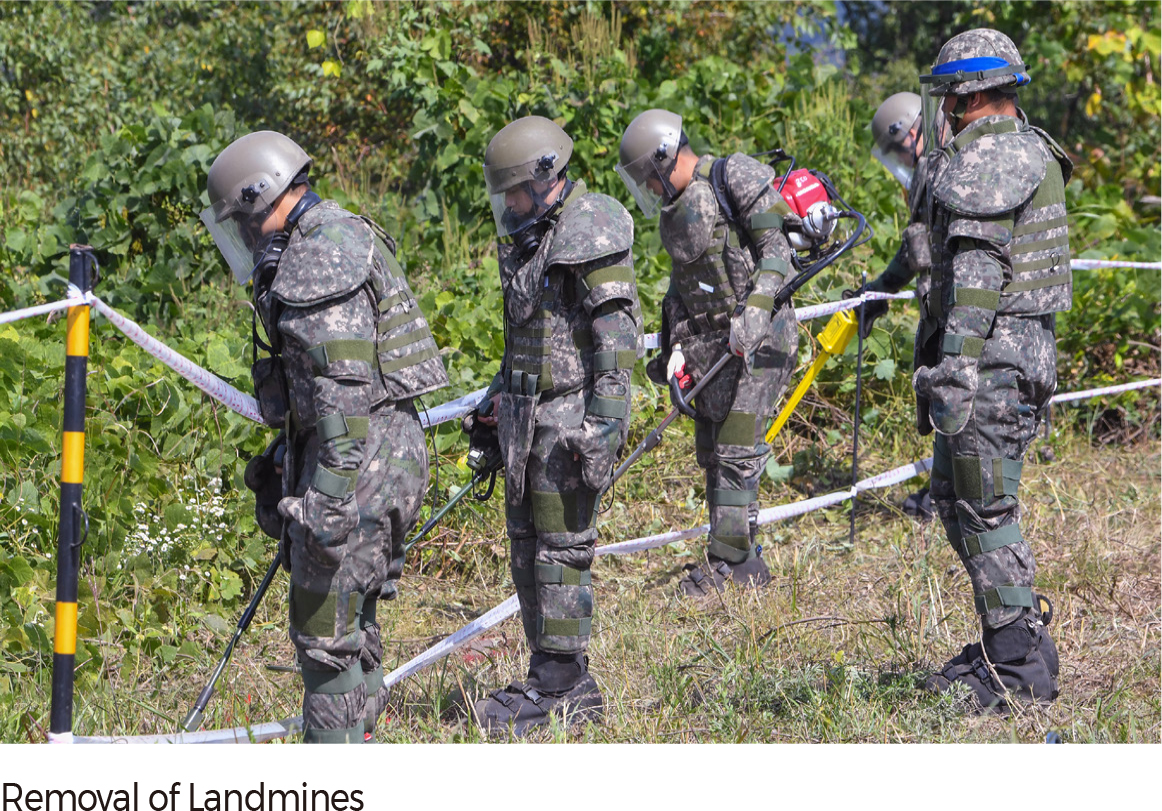English I 2019
Influenced by the Cold War structure around the Korean Peninsula, the inter-Korean relationship was hostile and confrontational through division and the subsequent Korean War. The Cold War ended for most of the world with the collapse of the socialist system in the Soviet Union and Eastern European countries. In February 1997, the South Korean government under Kim Dae-jung inaugurated a forward-looking policy on North Korea called the “Sunshine Policy” to end the Cold War on the Korean Peninsula. As a result, the first inter-Korean summit after the division of the Korean Peninsula was held between South Korean President Kim Dae-jung and North Korean leader Kim Jong-il from June 13 to June 15, 2000, and both announced the June 15th North-South Joint Declaration. Both Koreas agreed to resolve the question of reunification independently, promptly resolve humanitarian issues such as exchange visits by separated family members and relatives, and consolidate mutual trust by promoting balanced development of the national economy through economic cooperation. From October 2 to October 4, 2007, South Korean President Roh Moo-hyun and North Korea's Chairman Kim Jong-il held the second summit and announced “The Declaration for the Development of Inter-Korean Relations and Peace and Prosperity.” It is also called “The 10.4 South-North Summit Declaration” and both agreed to uphold, and endeavor to actively realize, the June 15 Declaration, and discussed all kinds of issues to realize the development of the inter-Korean relationship, peace on the Korean Peninsula, and co-prosperity and reunification of both Koreas. Since 2008, inter-Korean relations have been strained, but South Korean President Moon Jae-in held three summit meetings with North Korea’s Chairman Kim Jong-un in 2018. The third inter-Korean summit meeting was held at the Peace House of Panmunjom on April 27, 2018, and both adopted “The Panmunjom Declaration for Peace, Prosperity and Reunification of the Korean Peninsula.” On May 26, 2018, a fourth summit meeting was held as a closed-door meeting at Tongilgak in the north of Panmunjom, and both Koreas held the fifth summit meeting in Pyongyang on September 19-20, 2018 and included various agreements on the military, economy, and separated families in the “September 19th Pyongyang Declaration.”
From 1945, when North and South Korea were divided, to the 1960s, exchanges and cooperation between the two were virtually nonexistent. In the early 1970s, the North and South first discussed the possibility of an exchange of goods through their respective Red Cross Societies. On November 8, 1994, the Kim Young-sam administration announced the first round of measures to activate inter-Korean economic cooperation. As the successive Kim Dae-jung administration unveiled the second round of measures and held a summit meeting with the North, inter-Korean economic cooperation entered a new phase.
The progress in inter-Korean economic cooperation has had a positive impact on families separated by the division between North Korea and South Korea. Between 2003 and 2007 when inter-Korean economic exchanges were at their peak, families were able to search for their family members separated from them by the Demarcation Line, communicate with them through letters, and have reunions at governmental and non-governmental levels. As inter-Korean relations cooled in 2008, the separated families’ chances of communicating with their family members significantly decreased.
Since the inter-Korean relationship began to improve in 2018, inter-Korean exchange and cooperation has been actively underway in various realms such as arts, cultures, sports, academic research and cultural heritage. In February 2018, inter-Korean exchange performances held at the Pyeongchang Winter Olympics. A joint archaeological excavation of Manwoldae, Gaeseong was occurred from October to December 2018. At the 2018 Asian Games, North Korean and South Korean teams marched together under a unified Korean flag and formed coalition teams to compete with other national teams.
Major economic cooperation projects include Geumgangsan Mountain tourism, the inter-Korean railway, road construction, and the Gaeseong Industrial Complex development. Tourism to Geumgangsan Mountain began on November 18, 1998, and the North desig-nated the Geumgangsan Mountain area as a special tourist district by enacting the “Geumgangsan Tourist District Act” on November 13, 2002. However, it was suspended in July 2008 after a South Korean tourist was shot dead by a North Korean soldier. After ministerial talks in July and August of 2000, the North and South agreed to reconnect a section of the Seoul-Sinuiju Gyeongui railway line and a section of the Munsan-Gaeseong Roadway. The ground-breaking ceremony for the two cross-border railways and roadways took place on September 18, 2002. Then, in 2003, the Gyeongui line was temporarily opened for the development of the Gaeseong Industrial Complex. After the opening ceremony on February 11, 2003, the Donghae line was used to provide tourist access to Geumgangsan Mountain. In May 2007, trial runs of the Gyeongui line (Munsan-Gaeseong) and the Donghae line (Geumgangsan-Jejin) took place; in December of the same year, regular freight train service was initiated. However, as the inter-Korean relation-ship deteriorated, railway service was disrupted. While it was in operation, the total number of inter-Korean one-way railway trips was 222.
The Gaeseong Industrial Complex project was created from an agreement between the South’s Hyundai Asan and the North’s Korean Asia-Pacific Peace Committee (KAPPC) in August 2000. On June 30, 2003, the first round of development began on a 3.3 million m² complex in North Korea, and on December 15, 2004, the first products were brought to market. The Gaeseong Industrial Complex project faced difficulties when North Korea restricted land route traffic on December 1, 2008. The Gaeseong Industrial Complex production is growing fast, with 125 companies in the complex hiring 55,000 North Korean workers. Additionally, its accumulated production output stand at USD 3,230 million on December 31, 2015. However, in February 2016, it was closed by the Park Geun-hye government.
To implement the Panmunjom Summit’s goal of restoring railway and road transportation and modernizing the North’s rail infrastructure, South and North Korea held talks about connecting the railways on June 26, 2018. Both agreed to jointly inspect the inter-Korean railroad connection and conduct an on-site survey of North Korean railways for the Donghae and Gyeongui railways. As a result, for 18 days (November 30 to December 17) South and North Korea jointly inspected the 400 km Gyeongui Line railway, which connects Kaesong to Sinuiju, and the 800 km Donghae Line railway from Geumgangsan Mountain to the Tumen River. On Dec 26, 2018 at the Panmunjeom Station, a groundbreaking ceremony was held to celebrate linking the South and North Korean railway networks.
On September 19, 2008 at the Pyeongyang Summit, both Koreas adopted the “Agreement on the Implementation of the Historic Panmunjom Declaration in the Military Domain” as an annex to the Pyeongyang Declaration. It includes existing military agreements between the two Koreas such as ceasing military hostilities in regions of confrontation, turning the area around the Northern Limit Line in the Yellow Sea into a maritime peace zone, devising military assurance measures necessary for invigorating exchanges, cooperation, contacts and visits, and arranging various measures for mutual military confidence-building. To implement this agreement, both Koreas began to remove about 800,000 landmines buried at the frontline area called “Arrow Head Hill” for joint excavating of remains from the Korean War. In addition, the two Koreas and the UNC (United Nations Command) took measures to withdraw firearms and military posts from the Joint Security Area, cutting the numbers of personnel stationed there, and conducting a joint verification by the end of October 2018. On November 1, 2018, South and North Korea also began dismantling guard posts (GPs) within 1 km of each side of the demilitarized zone (DMZ) on a trial basis and completed the removal of ten GPs except for one on each side. On December 12, 2018, the two Koreas inspected each other’s military facilities for the first time since the Armistice Agreement in 1953. Representatives from the South and North Korean armies visited each other’s guard posts (GPs) to verify the demolition of GPs in the demilitarized zone (DMZ). From November 5 to December 9, 2018, both Koreas conducted a hydrographic survey to guarantee freedom of navigation by civilian vessels in the Hangang River estuary. These changes show that improvement in the inter-Korean relationship leads to the relaxation of tension in the border region. |

